
Government House is a heritage-listed mansion at 170 Fernberg Road, Paddington, Brisbane, Queensland, Australia. It is the official residence of the Governor of Queensland, the representative of the Australian monarch in Queensland. It was originally designed by Benjamin Backhouse and built 1865, but has been subsequently extended and refurbished. It is also known as Fernberg. It was added to the Queensland Heritage Register on 21 October 1992.
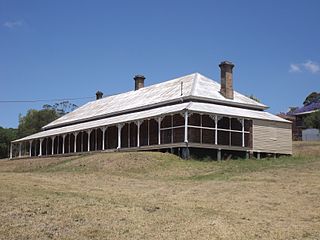
Harlaxton House is a heritage-listed villa at 6 Munro Street, Harlaxton, Queensland, Australia. It was built from 1869 to 1870 to 1910s circa. It was added to the Queensland Heritage Register on 21 October 1992.

Picnic Point is a heritage-listed park at 168 Tourist Road, Rangeville, Toowoomba, Toowoomba Region, Queensland, Australia. It was added to the Queensland Heritage Register on 13 November 2008.

Baillie Henderson Hospital is a heritage-listed psychiatric hospital at 1 Hogg Street, Cranley, Toowoomba, Toowoomba Region, Queensland, Australia. It was built from 1888 to 1919. It is also known as Toowoomba Hospital for the Insane, Toowoomba Lunatic Asylum, and Toowoomba Mental Hospital. It was added to the Queensland Heritage Register on 27 September 1999.

Boyce Gardens is a heritage-listed garden and citrus farm at 6 Range Street, Mount Lofty, Toowoomba, Toowoomba Region, Queensland, Australia. It was built from c. 1930 to 1950s. It was added to the Queensland Heritage Register on 25 January 2001.

68 Stephen Street is a heritage-listed cottage in South Toowoomba, Queensland, Australia. It is one of the earliest surviving dwellings in Toowoomba, the land having been part of one of the first subdivisions when the town was developed. It was built by the mid-1860s for Charles Taylor, who was described in his will as a "well-sinker", and was constructed using laterite, an uncommon material in Toowoomba buildings.
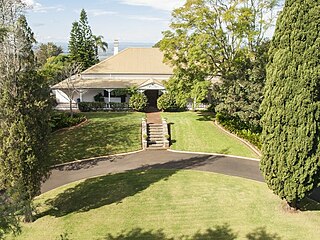
Fernside is a heritage-listed villa at 4-6 Fernside Street, East Toowoomba, Toowoomba, Toowoomba Region, Queensland, Australia. It was built from c. 1876 to c. 1915. It was added to the Queensland Heritage Register on 21 October 1992.

Gabbinbar is a heritage-listed villa at 344-376 Ramsay Street, Toowoomba, Middle Ridge, Toowoomba Region, Queensland, Australia. It was designed by architect Willoughby Powell for the Rev. Dr. William Lambie Nelson and built in 1876 by Richard Godsall. It was added to the Queensland Heritage Register on 21 October 1992.

Gladstone House and Cottage is a heritage-listed detached house at 1B-3 Gladstone Street, Newtown, Toowoomba, Toowoomba Region, Queensland, Australia. It was designed by Harry Marks for himself and built c. 1908. It is also known as St Rest. It was added to the Queensland Heritage Register on 13 January 1995.

Glen Alpine is a heritage-listed villa at 32-36 East Street, Redwood, Toowoomba, Toowoomba Region, Queensland, Australia. It was designed by Toowoomba architect Harry Marks and built c. 1918. It was added to the Queensland Heritage Register on 11 June 1993.

Toowoomba Police Station Complex is a heritage-listed police station at 50-52 Neil Street, Toowoomba, Queensland, Australia. It was designed by Raymond Clare Nowland and built in 1935. It was added to the Queensland Heritage Register on 5 October 1998.

Tor is a heritage-listed villa at 396 Tor Street, Newtown, Toowoomba, Toowoomba Region, Queensland, Australia. It was designed by William Hodgen and built in 1904. It was added to the Queensland Heritage Register on 28 May 1999.
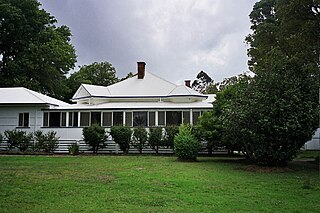
Unara is a heritage-listed detached house at 9-13 Tourist Road, East Toowoomba, Toowoomba, Toowoomba Region, Queensland, Australia. It was built c. 1906. It is also known as Unara Community Health Centre. It was added to the Queensland Heritage Register on 24 March 2000.
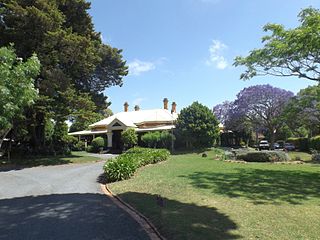
Vacy Hall is a heritage-listed villa at 135 Russell Street, Toowoomba, Toowoomba Region, Queensland, Australia. It was built c. 1899. It was added to the Queensland Heritage Register on 21 October 1992.

Mount St Mary's Convent is a heritage-listed Roman Catholic convent at 50 Grove Street, Toowong, Brisbane, Queensland, Australia. It was built from 1885 to c. 1918. It is also known as Goldicott. It was added to the Queensland Heritage Register on 26 November 1998.

Old Bishopsbourne is a heritage-listed house at 233 Milton Road, Milton, City of Brisbane, Queensland, Australia. It was designed by Benjamin Backhouse and built from 1865 to 1959. It is also known as St Francis Theological College and Bishopsbourne. It was added to the Queensland Heritage Register on 21 October 1992.

The Michael Gannon residence is a heritage-listed holiday home at 150 Kingsley Terrace, Manly, City of Brisbane, Queensland, Australia. It was built c. 1888. It was added to the Queensland Heritage Register on 27 October 2000.
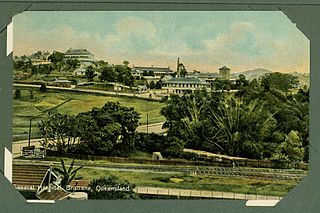
Brisbane General Hospital Precinct is a heritage-listed hospital precinct at 40 Bowen Bridge Road, Herston, City of Brisbane, Queensland, Australia. It was built from 1875 to 1941. It includes six historic buildings associated with the Royal Brisbane and Women's Hospital and the former Royal Children's Hospital, as well as aspects of their grounds and landscaping. It was added to the Queensland Heritage Register on 28 March 2003. A number of buildings in the precinct, in particular the Lady Lamington Nurses Home, will be redeveloped as part of the Herston Quarter development.
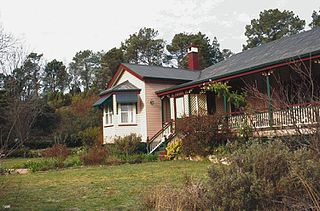
El Arish is a heritage-listed house and gardens at 94 Greenup Street, Stanthorpe, Southern Downs Region, Queensland, Australia. It was built from 1880s & early 1920s to 1930s. It was added to the Queensland Heritage Register on 4 October 1996.

Masel Residence is a heritage-listed detached house at 98 High Street, Stanthorpe, Southern Downs Region, Queensland, Australia. It was designed by Charles William Thomas Fulton and built from 1937 to 1938 by Kell & Rigby. It is also known as Diamond Residence. It was added to the Queensland Heritage Register on 7 February 2005.

























